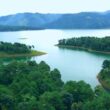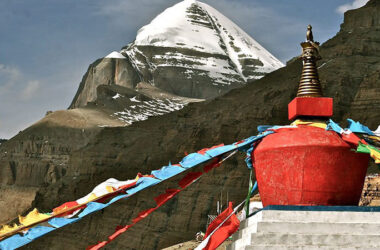The Mawphlang Sacred Forest, located in Meghalaya, India, is a mesmerizing destination that offers a unique blend of natural beauty, cultural significance, and spiritual essence. This ancient forest, shrouded in mystery and folklore, has been preserved by the local Khasi tribe for centuries. In this article, we will delve into the enchanting world of Mawphlang Sacred Forest, uncovering its rich biodiversity, cultural heritage, and the captivating experiences it has to offer.
Table of Contents
- The Significance of Mawphlang Sacred Forest
- Exploring the Biodiversity
- Cultural Heritage and Traditions
- The Sacred Grove and Rituals
- Tranquil Walking Trails
- Flora and Fauna of Mawphlang
- Conservation Efforts
- Experiencing the Sacred Forest
- Local Cuisine and Traditional Delights
- Nearby Attractions
- Best Time to Visit
- Transportation and Accommodation
- Tips for Visitors
- Preserving the Sanctity of Mawphlang Sacred Forest
- Conclusion
1. The Significance of Mawphlang Sacred Forest
Mawphlang Sacred Forest holds immense cultural and ecological significance. It is considered a sacred site by the Khasi tribe, who believe that the forest is home to their deities and ancestors. This belief has led to the preservation of the forest in its pristine form, untouched by human intervention.
2. Exploring the Biodiversity
Mawphlang Sacred Forest is a treasure trove of biodiversity, boasting a wide range of plant and animal species. The forest is home to numerous rare and endemic plants, including medicinal herbs and aromatic shrubs. It provides a haven for various avian species, butterflies, and insects, making it a paradise for nature enthusiasts and wildlife photographers.
3. Cultural Heritage and Traditions
The Khasi tribe has a deep-rooted connection with the Mawphlang Sacred Forest. They believe that it is a sacred abode and a source of spiritual energy. The forest plays a vital role in their cultural practices and rituals, reflecting their harmonious relationship with nature. Visitors have the opportunity to witness and participate in traditional ceremonies and learn about the tribe’s customs and beliefs.
4. The Sacred Grove and Rituals
At the heart of Mawphlang Sacred Forest lies the sacred grove, a place of immense reverence and sanctity for the Khasi community. The grove is adorned with ancient monoliths and sacred stones, symbolizing the presence of ancestral spirits. Rituals and prayers are conducted here, reinforcing the bond between the tribe and their natural surroundings.
5. Tranquil Walking Trails
Visitors can embark on peaceful walks along the well-maintained trails that wind through the forest. These trails offer an opportunity to immerse oneself in the serene ambiance of the surroundings while admiring the breathtaking beauty of the lush green foliage and cascading streams. Each step reveals a new aspect of the forest’s charm and tranquility.
6. Flora and Fauna of Mawphlang
The diverse flora of Mawphlang Sacred Forest includes towering ancient trees, vibrant orchids, ferns, and mosses. The forest is also home to several endangered animal species, such as the Asian elephant, clouded leopard, and Hoolock gibbon. Explorers can witness nature’s marvels up close and learn about the delicate balance of the ecosystem.
7. Conservation Efforts
Preserving the ecological integrity of Mawphlang Sacred Forest is of utmost importance. Local communities and environmental organizations have joined hands to safeguard this natural treasure through conservation initiatives. These efforts include awareness campaigns, afforestation drives, and sustainable tourism practices, ensuring the forest’s long-term survival.
8. Experiencing the Sacred Forest
A visit to Mawphlang Sacred Forest offers a truly immersive experience. From guided tours that provide insights into the cultural significance to spiritual ceremonies performed by the Khasi tribe, visitors can connect with the forest on a profound level. The ambiance, filled with whispers of ancient tales and a sense of serenity, leaves an indelible mark on the soul.
9. Local Cuisine and Traditional Delights
Exploring the surroundings of Mawphlang would be incomplete without savoring the local cuisine. The Khasi tribe’s culinary delights offer a tantalizing blend of flavors, with dishes prepared using organic ingredients sourced from the forest. From bamboo shoots to smoked meat preparations, visitors can indulge in a gastronomic journey that complements their exploration of the sacred forest.
10. Nearby Attractions
Mawphlang Sacred Forest serves as a gateway to other captivating attractions in the region. Nearby, one can discover the living root bridges of Cherrapunji, the sparkling waterfalls of Shillong, and the awe-inspiring landscapes of the Meghalaya plateau. Exploring these destinations unveils the diverse natural wonders that make Meghalaya a hidden gem in Northeast India.
11. Best Time to Visit
The best time to visit Mawphlang Sacred Forest is during the months of October to April when the weather is pleasant, and the forest is at its most vibrant. The monsoon season, from May to September, brings heavy rainfall and can hinder outdoor activities. It is advisable to check weather conditions and plan accordingly before embarking on the journey.
12. Transportation and Accommodation
Mawphlang Sacred Forest is located approximately 25 kilometers from Shillong, the capital city of Meghalaya. Visitors can hire taxis or use public transport to reach the forest. In terms of accommodation, options range from budget-friendly guesthouses in nearby villages to comfortable resorts in Shillong, catering to different preferences and budgets.
13. Tips for Visitors
- Wear comfortable clothing and sturdy shoes suitable for walking in the forest.
- Carry insect repellent to protect against mosquitoes and other bugs.
- Respect the local customs and traditions while visiting the forest.
- Do not litter and maintain the cleanliness of the surroundings.
- Follow the instructions of the guides and avoid venturing off the designated trails for safety reasons.
14. Preserving the Sanctity of Mawphlang Sacred Forest
As responsible travelers, it is our collective responsibility to preserve the sanctity of Mawphlang Forest. By practicing sustainable tourism, respecting the local culture, and supporting conservation efforts, we can ensure the forest’s preservation for future generations to come.
Conclusion
Mawphlang Sacred Forest is a testament to the harmonious coexistence of humans and nature. Its mystical aura, vibrant biodiversity, and cultural significance make it a destination like no other. A journey through this enchanting forest offers an opportunity to reconnect with our roots, find solace in nature’s embrace, and experience the profound beauty that lies within the realm of Mawphlang.
Similar Articles
FAQs
Is photography allowed in Mawphlang Sacred Forest?
Yes, photography is allowed in the forest. However, it is advised to respect the local customs and seek permission before photographing individuals or conducting commercial shoots.
Are there any restrictions on entry to the forest?
No, there are no entry restrictions. Visitors are welcome to explore the forest and partake in guided tours.
Can I camp overnight in Mawphlang Sacred Forest?
No, camping is not allowed within the forest premises. However, there are nearby campsites and accommodation options available for overnight stays.
Are there any specific guidelines for participating in rituals?
Visitors interested in participating in rituals should seek guidance from the local guides or tribal elders to ensure respectful engagement and adherence to cultural protocols.
Are there any souvenir shops near Mawphlang Sacred Forest?
Yes, there are small souvenir shops near the entrance of the forest where visitors can purchase local handicrafts, artifacts, and traditional products as mementos of their visit.









